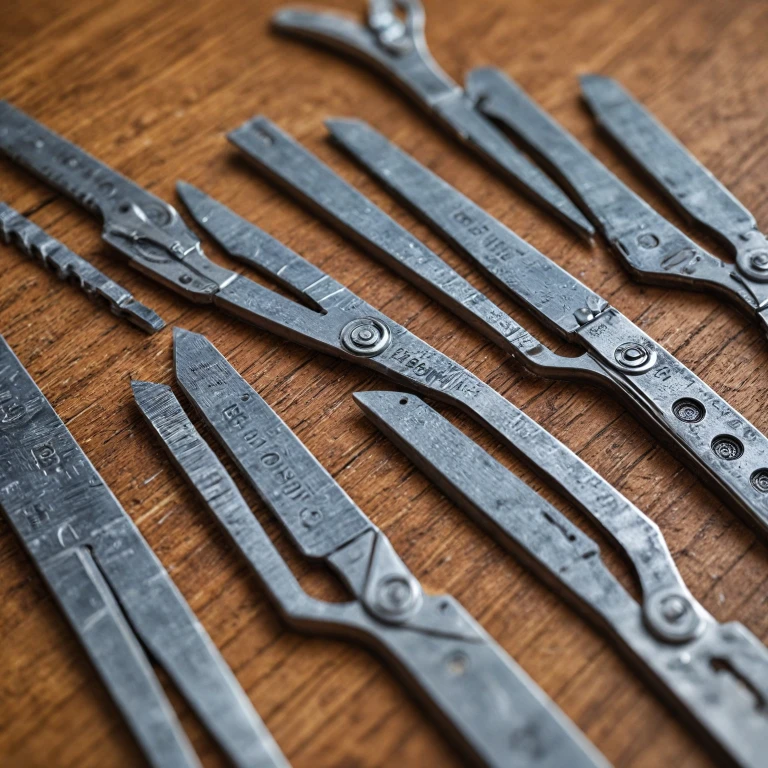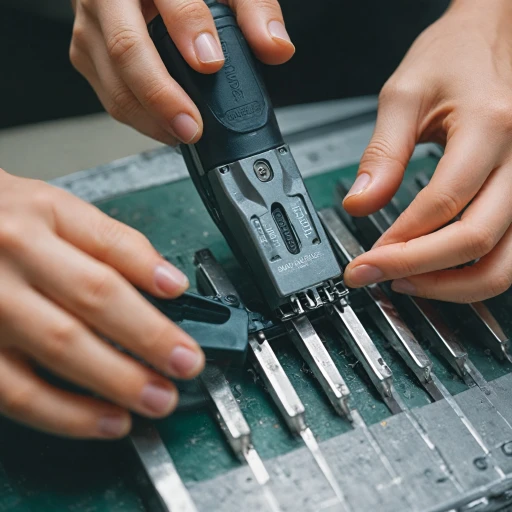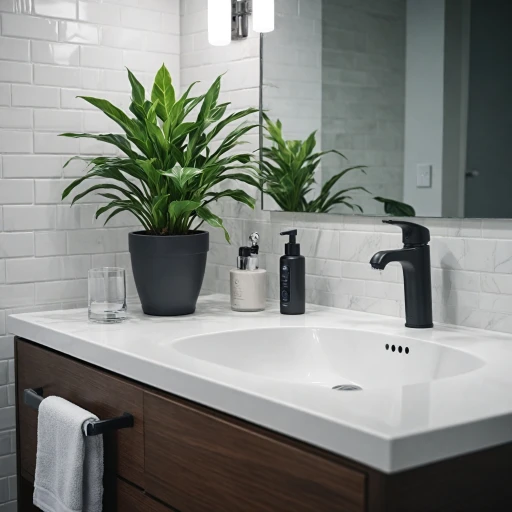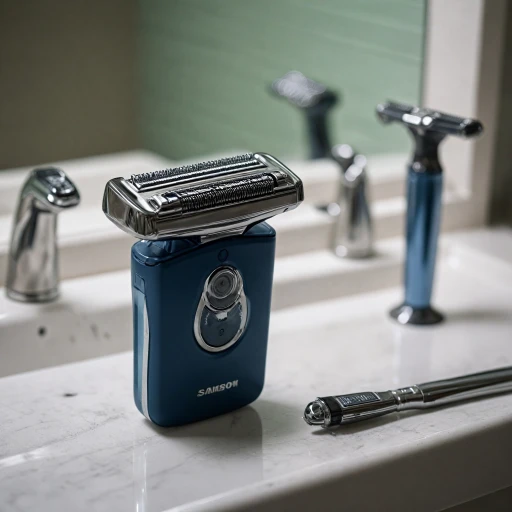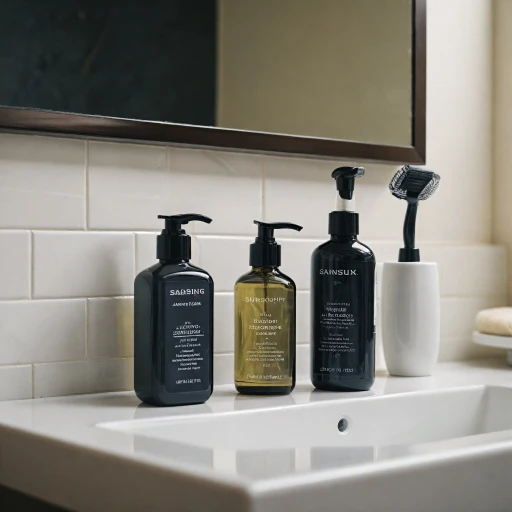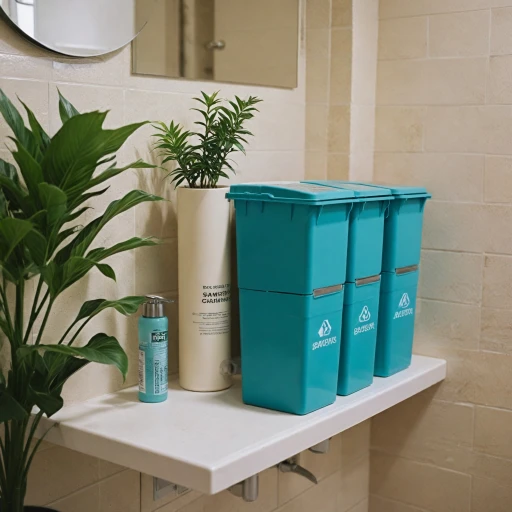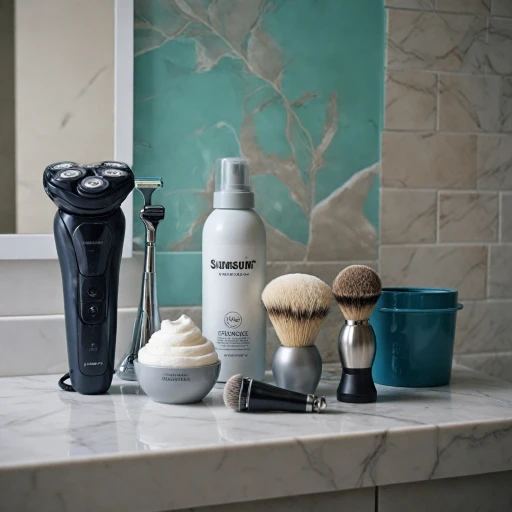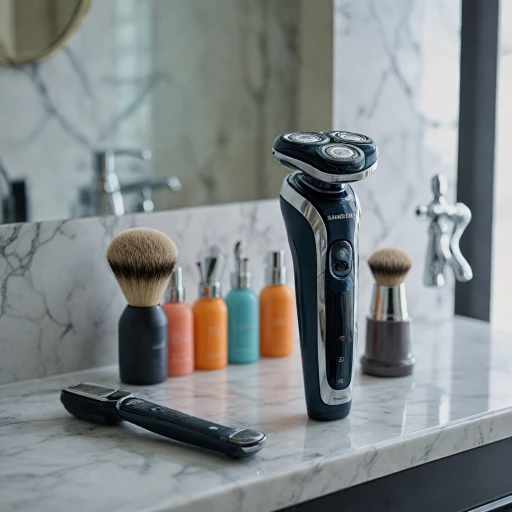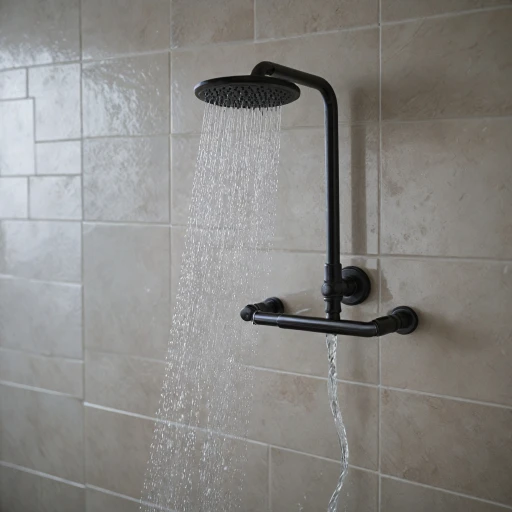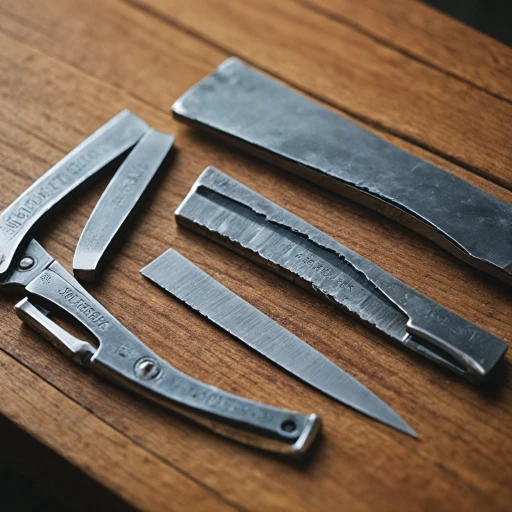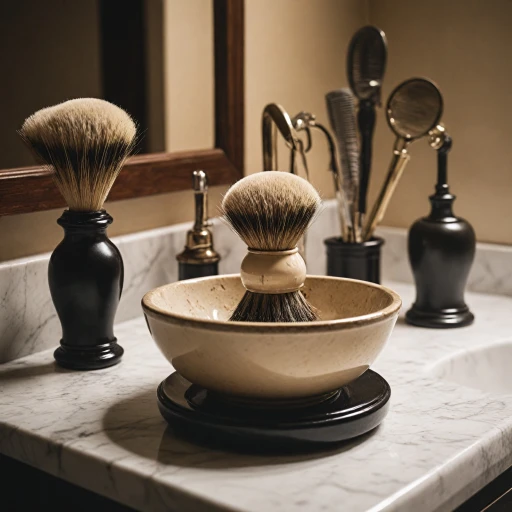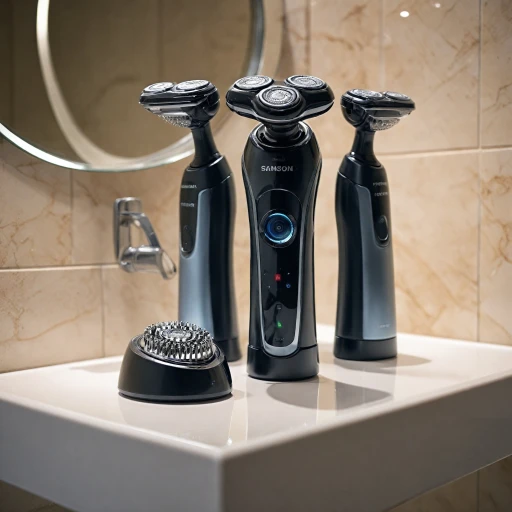
Understanding Clipper Blade Types
Exploring Different Clipper Blade Types
When it comes to selecting the right clipper blades, understanding the various types available is crucial. Each blade type is designed for specific cutting tasks, and knowing their differences can significantly impact your grooming results. Whether you're a professional barber or a home user, choosing the right blade can make all the difference in achieving the desired look.
Clipper blades come in a variety of styles, each with unique features:
- Standard Blades: These are the most common and versatile, suitable for general cutting tasks. They are often made from stainless steel, offering durability and a sharp edge for precise cuts.
- Fade Blades: Designed for creating smooth transitions and blending, fade blades have a finer tooth pattern. They are ideal for detailed work and achieving that perfect fade.
- Skip Tooth Blades: With alternating long and short teeth, skip tooth blades are perfect for cutting through thick or coarse hair. They allow for faster cutting without sacrificing precision.
- Wide Blades: These blades cover a larger surface area, making them ideal for quick trims and large sections. A wide blade can save time and effort, especially for those with longer hair.
- Deep Tooth Blades: Featuring deeper teeth, these blades are excellent for cutting through dense hair. They provide a smooth cut and are often used in professional settings.
Understanding these blade types can help you make an informed decision when adding to your cart. Each type serves a specific purpose, and knowing which one aligns with your needs is essential. For more insights into maintaining your clipper blades, consider exploring how blade material affects performance and maintenance tips in the subsequent sections.
For those interested in enhancing their grooming routine, understanding the Braun Clean and Renew System can offer additional benefits. This system ensures your clippers remain in top condition, providing a clean and efficient shave every time.
How Blade Material Affects Performance
Evaluating the Impact of Blade Composition on Clipper Performance
When selecting the perfect clipper blade, understanding how the blade material influences performance is crucial. Whether you're a professional barber or a home groomer, the choice of blade material directly affects not only efficiency but also the longevity of your clipper's performance. The blade material largely dictates how well your clippers can maintain sharpness and resist wear over time. Commonly, stainless steel blades are favored for their durability and rust resistance, making them a consistent choice for regular use. These blades are not only robust but also offer a sleek finish that requires minimal maintenance, ensuring your clippers remain functional for longer periods. In contrast, there are ceramic blades that some prefer due to their ability to stay cooler during prolonged use. This property is particularly beneficial for those working in fast-paced environments. The downside, however, is that ceramic materials can be more brittle than their steel counterparts. To maximize the longevity and performance of your blades, consider exploring how to sharpen clipper blades. Regular sharpening ensures that blades remain in top condition, ultimately enhancing their cutting efficiency. Also notable are the technological advancements in clipper design, such as models incorporating fine or coarse teeth, and wide or deep tooth configurations. For instance, the 'skip tooth' design allows for faster cuts by alternating short and long teeth, effectively reducing the load on the blade. When choosing your next blade, remember that a higher unit price doesn't necessarily guarantee better performance. Each blade type and its material should match your specific needs, be it a fade blade, wide or deep tooth clipper configurations, or a 'phaze blade' for specific styles. Investing time to view options and check user feedback, particularly those on sale, can reveal the best set of tools for your grooming goals. As you consider the options, allow yourself a quick view of what's in the market today. Products often feature varying tooth configurations, making the cart more diverse and customizable to your grooming preferences. Remember, your choice in blades affects every trim – make it count.Maintenance Tips for Clipper Blades
Maintaining Optimal Performance of Your Clipper Blades
Keeping your clipper blades in top shape is crucial for ensuring they deliver consistent and efficient performance. Regular maintenance is not just about cleaning; it's about extending the life of the blades while ensuring a smooth, snag-free cutting experience. Here are some tips to help you maintain your clipper blades effectively:- Regular Cleaning: After each use, remove any hair and debris from your clipper blades. This is essential to prevent build-up that can affect performance. Use a small brush to remove hair from in between the teeth. Periodically, add cart to your routine by using a blade wash solution to deep clean the blades.
- Lubrication: Keeping the blades properly lubricated reduces friction and prevents the steel from rusting. Apply a few drops of clipper oil along the blade's edges after each cleaning session. Run the clipper for a few seconds to distribute the oil evenly.
- Avoid Moisture Damage: Ensure your clippers are dry before storing them. Moisture can cause corrosion, particularly if the blades are made of stainless steel. Store your clippers in a dry place and consider buying protective cases or covers.
- Blade Sharpening and Replacement: Even the best-maintained blades may dull over time. Replace them or seek professional sharpening if you notice a decrease in cutting efficiency. Often, a new replacement blade can make a significant difference in performance.
- Check the Alignment: Misalignment can lead to ineffective cuts and potential injury. Ensure the blades are perfectly aligned. Adjust them if necessary by loosening the screws and making subtle positional tweaks.
Choosing the Right Blade Size
Finding the Perfect Blade Size for Your Needs
Choosing the right blade size for your clipper is crucial for achieving the desired cutting results. The size of the blade affects how much hair is cut and the overall finish of the haircut. Here’s what you need to consider when selecting the appropriate blade size:
- Understanding Blade Numbers: Blade sizes are often represented by numbers. A lower number typically means a longer cut, while a higher number results in a shorter cut. For example, a #3 blade will leave more hair than a #7 blade.
- Wide Blade vs. Standard Blade: Wide blades cover more area and are ideal for large sections of hair, making them perfect for quick trims. Standard blades, on the other hand, offer more precision and are better for detailed work.
- Specialty Blades: Consider specialty blades like the skip tooth or fade blade. Skip tooth blades are great for bulk cutting and blending, while fade blades are designed for smooth transitions in fades.
- Material Considerations: Stainless steel blades are durable and resistant to rust, making them a popular choice. However, the blade material can affect the unit price, so consider your budget when making a decision.
- Replacement and Maintenance: Regularly check your blades for wear and tear. Replacement blades should be added to your cart when you notice a decline in performance. Keeping a blade set on hand ensures you’re never caught without a sharp blade.
By understanding these factors, you can make an informed decision when adding blades to your cart, ensuring you have the right tools for every cutting task.
Common Issues with Clipper Blades and Solutions
Troubleshooting Clipper Blade Challenges
Encountering issues with clipper blades can be frustrating, whether you're dealing with professional grooming tools or personal trimmers. Here are some common problems and practical solutions to ensure optimal performance:
- Clogged Blades: Hair and product buildup can obstruct the cutting action. Regular cleaning with a brush and appropriate disinfectant is essential.
- Dull Blades: Over time, even the best blades lose their sharpness. Consider a clipper blade sharpening routine to restore efficiency.
- Blade Alignment: Misaligned blades can lead to uneven cuts or nicks. Adjust the alignment by loosening the screws, repositioning the blade, and retightening.
- Hair Pulling: If the clipper is pulling hair instead of cutting, this can be due to worn blades or insufficient lubrication. Ensure blades are sharp and apply clipper oil before use.
- Overheating: Continuous use can cause heat buildup, leading to discomfort. Break sessions and allow blades to cool, or consider replacing with a stainless steel set designed for cooler performance.
- Breakage or Rusting: Regular maintenance prevents degradation. Opt for high-quality materials, such as carbon or stainless steel, and store properly to prevent exposure to moisture.
Addressing these common issues can prolong the life of your clipper blades and maintain their cutting performance, ensuring consistent and quality results every time you use them.
Comparing Popular Clipper Blade Brands
Exploring Top Clipper Blade Brands
When it comes to selecting the right clipper blades, understanding the nuances of different brands can make a significant difference in your grooming experience. Each brand offers unique features, materials, and designs that cater to various needs. Here, we compare some of the most popular brands in the market.
- Andis: Known for their durable stainless steel blades, Andis offers a wide range of options, including the fade blade and deep tooth designs. Their blades are often praised for their precision and longevity, making them a top choice for professionals and home users alike.
- Wahl: With a reputation for innovation, Wahl provides a variety of clipper blade sets that cater to different cutting needs. Their skip tooth blades are particularly popular for their ability to handle thick hair with ease, offering a smooth cutting experience.
- BabylissPRO: This brand is known for its high-performance trimmer blades and replacement blade options. BabylissPRO's products often feature advanced blade materials that enhance cutting efficiency and durability.
- Oster: Oster's clipper wide blades are designed for heavy-duty use, making them ideal for professional barbers. Their black series offers a sleek design with robust performance, ensuring a clean and precise cut every time.
When choosing a brand, consider factors such as unit price, blade material, and the specific needs of your grooming routine. Whether you're looking for a replacement blade or a complete blade set, understanding the strengths of each brand will help you make an informed decision.
For those interested in exploring more about clipper blades and their importance in electric shavers, you can read more here.
